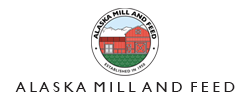Cats Need More Water | Alaska Mill & Feed
Posted by Kimberly McCourtney on Dec 3rd 2020
Recent veterinary research shows a powerful link in cats between the most common form of Feline Lower Urinary Tract Disorder (idiopathic cystitis) and cats feed an exclusively dry food diet. The study also found that cats that have already had a feline urinary tract disorder appear much more likely to have a recurrence if they are fed an exclusively dry diet instead of a canned diet.
Dehydration and diet:
The National Research Council of the National Academy of Science found that
cats who eat dry food exclusively consume less total moisture than cats that
eat canned food. And surprisingly, most cats that are fed a diet of dry food
don’t drink enough water to make up for the low moisture content of that food.
How to keep a cat hydrated: A
simple, healthy way to increase your cat’s water consumption is to replace part
of its dry diet with a high quality canned food that you feed to your cat twice
a day. Cats are carnivores, so look for canned foods with first ingredients
that are high-quality meat, especially chicken or turkey. Good quality fish,
beef, or lamb can provide variety, although these aren’t the ideal primary meat
for most cats. The amino acid profiles of chicken and turkey meat more closely
match a cat’s nutritional needs.
A balanced diet: Cats have
very few teeth that are suited to grinding food, so most cats don't chew as
much as crack dry food into slightly smaller pieces. However, recent,
large-scale research designed to evaluate the connection between diet and
dental health indicates that the inclusion of dry food in cat's diet may
significantly decrease the risk of periodontal disease and other dental
problems. This, combined with current research on the urinary tract health of
cats seems to indicate that both canned and dry foods are important components
of a cat's diet.

